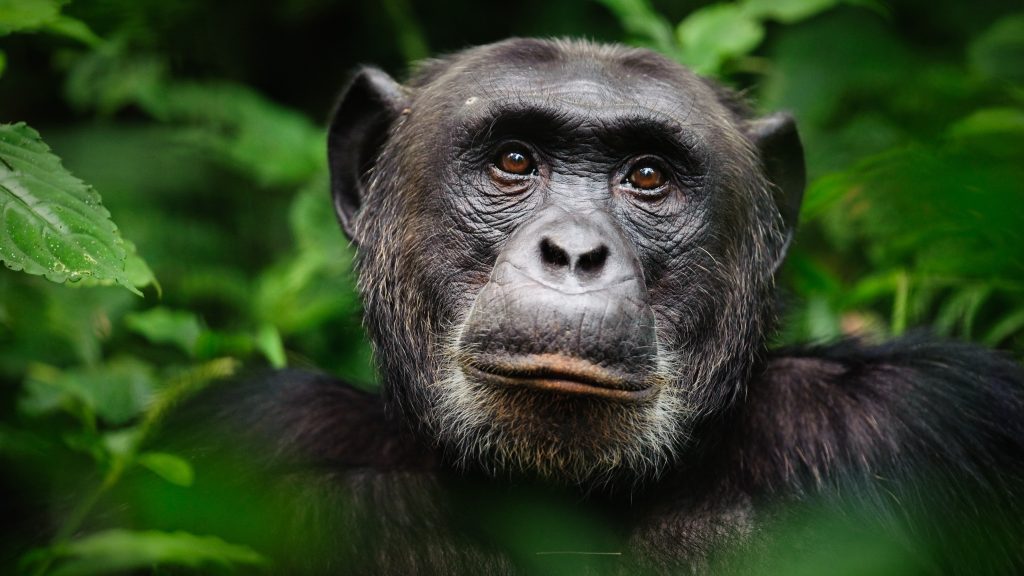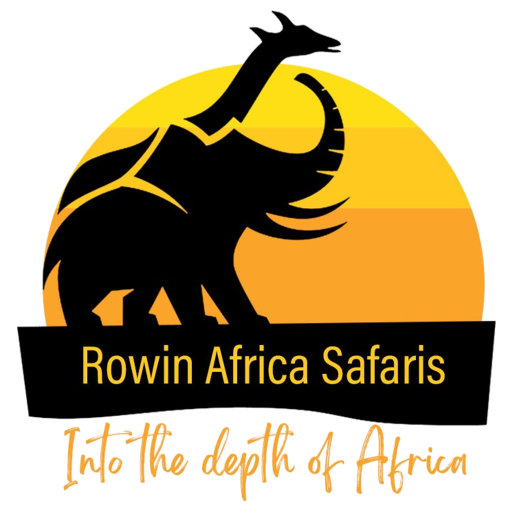Everything to Know About Kibale Forest National Park : Kibale Forest National Park is one of the most popular safari destinations in Uganda famed for its mind-blowing primate experience including chimpanzee trekking. Covering 766 square kilometers (296 sq miles) in western Uganda, the park has an alluring landscape scenery, biodiversity, and various remarkable Uganda Safari Activities.
Kibale protects a tropical rainforest, and the nearby Ndali-Kasenda Crater region is close to the forest. The park’s scenic appeal, chimpanzee trekking experience and a huge number of amazing accommodation options makes it one of the top tourist destinations in Uganda.

Plant and Vegetation
Over half of the park has medium-altitude moist evergreen forest in the north and medium – altitudes in the south. The other half has grasslands and swamps. Lake George cuts across the extreme southwestern corner of the park, south of the Rwimi River.
Wildlife in Kibale
Kibale Forest National Park is home to a variety of wildlife species, including 70 mammal species, 13 primate species, and 325 bird species in and under its canopy. Notable wildlife in Kibale National Park includes the remarkable common chimpanzees, baboon, red colobus, black and white colobus, L’Hoest’s, red-tailed, vervet, and blue monkeys, and the Uganda mangabey. Other exciting wildlife includes forest elephant, duiker, bushbuck, sitatunga, bushpigs, giant forest hogs, common warthogs, and African buffalo.
Predators in Kibale include leopards, serval, African golden cat, mongooses, otter, and occasionally visiting lion.
Although Kibale Forest National Park offers superlative primate viewing, it is challenging to see large mammals because of its forest cover.
Chimpanzee trekking in Kibale is always successful, guides and visitors have been following habituated chimpanzee groups through Kibale’s moist rainforest since 1994. The chimpanzees are tolerate of human presence.
Large mammals, such as elephants and buffaloes rarely appear on trails but their abundant in the forest.
Birds in Kibale National Park
Kibale National Park has a rich birdlife with 335 recorded bird species, including numerous rarities and regional endemics. Four of these birds that is Cassin’s spinetail, green-breasted pitta, masked apalis, and blue-headed bee-eater have not been recorded anywhere else in Uganda.
In the closed canopy forest, however, birds are heard rather than seen. Bird sightings in Kibale Forest are more reliable along the main road through the park and the board walk trail through the nearby Bigodi Wetland Sanctuary.
Bigodi Wetland Sanctuary is a community – run initiative, protects the Magombe Swamp from agricultural encroachment, and generates funds for the local people which is used to finance several local development projects. This swamp is a birder’s haven provided excellent sightings of papyrus gonoleks and other swamp specials as well as a decent number of Congo biome birds.

Safari Activities to Do in Kibale Forest National Park
Guided Nature Walks
Guided Nature Walks are perfect activity for tourists interested in having a close encounter with wildlife and nature in the park. There are several trails running from the forest which are used for guided nature walks, this experience is done with an armed ranger guide for protection purposes from animals like forest elephants.
Chimpanzee Trekking Adventures
Chimpanzee trekking is a highlight of any visit to Kibale Forest National Park, this excursion leaves the Kanyanchu Visitor Center at 08:00 and 14:00 daily. Chimpanzee sightings are not guaranteed on chimpanzee treks, however the odds of encountering a chimpanzee troop in Kibale Forest have significantly improved in recent years and now stands at around 96%.
The chimpanzee community, whose territory centers around Kanyanchu, is well habituated. Visitors can often approach within a few meters of them. While in the forest, you can expect to see a tleast three or two types of primates such as grey, cheeked mangabeys and red tailored monkeys.
Chimpanzee Habituation Experience
Chimpanzee Habituation Experience is perfect for dedicated chimpanzee enthusiasts or aspiring researchers seeking field experience. Join the full-day chimpanzee Habituation Experience for an intense primate adventure which involves staying with the chimpanzees all day with habituators and scientist and observing their behavior.
Night Guided Nature Walks
Night guided walks in Kibale Forest National Park are done with a help of spot lights, this activity runs from 19.30 to 22.00 daily, offering a good chance of sighting nocturnal primates such as the bush baby and potto.
Tourists are forbidden to walk along the forest paths or in Magombe Swamp withoutout a guide, but they can walk unguided elsewhere.
Birding
Kibale Forest National Park is a great birding destination hosting a variety of birds making it a birder’s paradise. The park is home to over 370 species including Abyssinian ground thrush, Afep pigeon, African pitta, Black bee-eater, Black-capped apalis, Black-eared ground thrush, Blue-breasted kingfisher, Blue-headed bee-eater, Blue-headed sunbird, Brown illadopsis, Brown-chested alethe, Cassin’s spinetail, Crowned eagle, Dusky crimsonwing, Green-breasted pitta, Grey parrot, Little greenbul, Masked apalis, Nahan’s francolin, Purple-breasted sunbird, Red-chested owlet, Red-faced woodland warbler, Ruwenzori apalis, Scaly-breasted illadopsis, Western nicator, White-naped pigeon and Yellow-rumped tinkerbird among others
How to get to Kibale Forest National Park
Kibale Forest National Park is normally approached from Fort Portal using the Kamwenge Road. A recently tarmac-paved route with several steep sections. If you are driving from Fort Portal town Center, follow Lugard Road downhill (north) to the Mpanga River, turning right immediately before the bridge.
About 12 km out of Fort Portal, you reach a major junction, where you need to fort left. The right fork incdidentally, leads to Lake Nkuruba and Ndali Lodge in the Ndali – Kasenda Crater Field.
